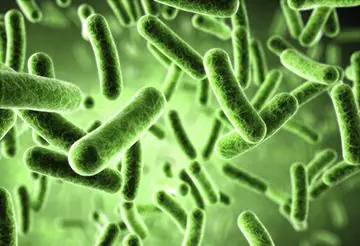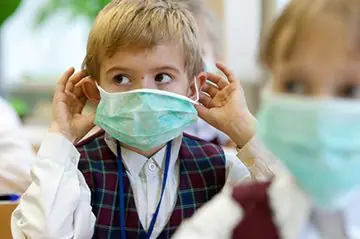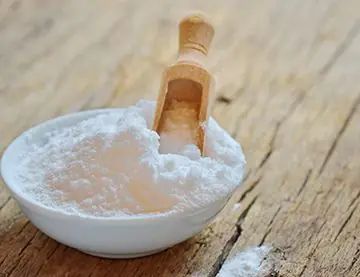The appearance of acne in the oral cavity may indicate various pathologies. Formations in the palate often indicate dental problems, infectious diseases and other disorders.
To cope with the disease, you must consult a doctor in a timely manner. The specialist will conduct a comprehensive diagnosis and make the correct diagnosis.
Reasons for appearance
A pimple on the roof of the mouth can be the result of various abnormalities. For effective therapy, an accurate diagnosis must be made.
Dental diseases
The main cause of rash in the mouth is dental pathology. These include violation of hygiene rules, traumatic injuries, improper installation of prostheses and other factors.
With inflammatory damage to the tooth root, small pimples form. It may have a white or yellowish tint. As a rule, rashes on the palate are called stomatitis or inflammatory lesions of the mucous membranes.
Infections
Infectious pathologies also quite often cause rashes in the mouth. Most often this is observed in childhood. Cough, inflammation of the throat, and viral infections often provoke minor rashes.
Such pathologies are often accompanied by general weakness and increased body temperature. Subsequently, a white coating appears in the throat. This poses an even greater health hazard.
The child has
The cause of rashes in children is usually infectious diseases and other factors.
Common causes of acne on the palate include the following:
- Measles. In this situation, the rash appears as white-green papules. The rash disappears on its own after 2-3 days and does not require specific therapy.
In this case, the underlying disease must be treated. Otherwise there is a risk of dangerous consequences.
- Chickenpox. With this disease, rashes do not always affect the mucous membranes. However, sometimes this happens.
- Thrush. In this case, a white pimple with plaque appears. Sometimes it bleeds. The pathology does not pose a great danger, but can interfere with normal food intake.
- Dysbacteriosis. The disease often occurs in young children and is accompanied by the appearance of bloody pimples in the mouth. Pathology indicates disturbances in the composition of the intestinal microflora.
In an adult
The appearance of problems in adulthood may be due to the following factors:
- Herpetic infection. In this case, a transparent pimple filled with liquid may appear on the roof of your mouth. An exacerbation of the disease occurs against the background of a weakened immune system.
The disease does not require special therapy. However, it is important to avoid damaging the rash. Otherwise, this may cause the infection to spread.
- Glossitis. The cause of red bloody acne can be poor diet, drinking large amounts of alcohol, or allergies. In this case, small painful pimples form.
If treatment is not started in time, a crust will form on their surface. In such a situation, the doctor selects therapy.
- Syphilis. White pimples on the palate, which are not accompanied by pain, may appear due to infection with syphilis. The rash is varied in nature and affects different parts of the oral cavity.
- Inflammation of the tooth root. The appearance of white and yellow pimples can cause inflammatory damage to the tooth root.
In pregnant women
The main cause of problems during pregnancy is stomatitis. Its appearance is caused by an imbalance of hormones in the body. As a result, the immune system is weakened, and the mucous membranes lose the ability to cope with infection.
If this problem occurs during pregnancy, therapy should be started immediately. It should be selected by a doctor. The infection cannot be ignored as it can cause complications.
Varieties
There are quite a few types of acne on the palate. Each of them is characterized by certain features.
Red
Such pimples usually affect the throat area and may indicate stomatitis, allergic reactions, or scarlet fever. The rash can also be a symptom of lupus erythematosus.
How to remove acne spots? More details here.
White
Such formations affect the mucous membranes of the oral cavity in infectious pathologies. These include the chronic form of tonsillitis, candidiasis, viral or bacterial stomatitis.
Solid
An internal pimple with a hard consistency often accompanies angioma. This dental disorder can have several types and is a benign tumor lesion of a blood vessel. It is associated with the expansion and appearance of new blood vessels.
The formation is called a true angioma and is accompanied by the appearance of a compaction on the palate. In addition, angioma is isolated that affects the lymph nodes. However, this form of the disease is observed much less frequently.
How to treat a pimple on the roof of your mouth
To cope with acne, you need to determine the exact causes of its appearance. Depending on this, you can select medications and folk remedies.
Pharmacy products
Treatment is selected depending on the causes of the rash. Most often, doctors prescribe antibacterial agents and drugs that help relieve inflammation. For severe pain, analgesics are prescribed.
To cope with the pathology, you need to strictly adhere to the doctor’s recommendations and not interrupt the course of therapy at the first symptoms of improvement.
To eliminate the symptoms of fungal stomatitis, antifungal agents are indicated - in particular, fluconazole. Antifungal gels can also be used.
Rinsing the mouth with antiseptic solutions helps to cope with acne on the palate. If allergies occur, you need to stop contact with allergens and take antihistamines.
Often, in addition to the main medications, general strengthening agents are prescribed. They help improve immunity and make it easier to fight pathology.
ethnoscience
Folk remedies can only be used in addition to main therapy. There are many diseases that cannot be treated with home remedies. Syphilis is one of these diseases. Therefore, this treatment can be used after consulting a doctor.
To cope with inflammation and itching, you can use a soda solution. To do this, mix 250 ml of warm water with half a small spoon of soda, mix thoroughly and use for rinsing several times a day.
Kalanchoe and aloe have a similar effect. The juice of these plants must be used to treat the affected areas of the oral cavity.
The following infusions are highly effective:
- Take 1 large spoon of oak bark, mix with 250 ml of boiling water, cool. Rinse your mouth with the strained product 4-5 times a day.
- Take 1 tablespoon each of calendula, chamomile and yarrow, add 250 ml of boiling water and leave for 20 minutes. Rinse your mouth with the strained mixture 3-4 times a day.
To prevent the proliferation of pathogenic bacteria in the oral cavity, it is worth using a solution of hydrogen peroxide with a concentration of 3%. To do this, 1 large spoon of the medicine should be mixed with a glass of water and used to rinse the mouth.
To combat bacteria, tea tree oil is perfect. To do this, it is recommended to add 3-5 drops of oil to a glass of water and keep the solution in your mouth for 1 minute. It is recommended to carry out the procedure up to 5 times a day.
At home
To alleviate your condition on your own, you need to follow these recommendations:
- maintain cleanliness of the oral cavity;
- do not injure acne;
- Avoid citrus fruits, spicy and salty foods - this will help avoid irritation of the affected areas;
- exclude sweets - this will help avoid creating an environment favorable for the development of pathogenic bacteria;
- eat more protein foods - fish, cheese, meat;
- drink a lot of clean water;
- Avoid drinking hot food and drinks.
Video: How to treat sores in the mouth?
Prevention
To avoid the appearance of rashes on the palate, you should follow these recommendations:
- adhere to the rules of oral hygiene;
- treat dental diseases in a timely manner;
- strengthen immunity;
- lead a healthy lifestyle;
- Healthy food;
- Avoid too hot and spicy foods.
Photo: Nature of the rashes
How to remove acne scars on the face? Find out further.
How to remove acne marks on the face? The answer is here.
Any oral disease causes serious discomfort. Even small and seemingly harmless pimples on the roof of the mouth lead to irritation with every movement. They are very distracting, and when inflamed, they interfere with eating and speaking.
Why do pimples appear on the palate?
Inflammation in the mouth is caused by the immune system's reaction to foreign microorganisms. The general name of this disease is stomatitis.
It can appear in response to a variety of stimuli, therefore it is divided into the following types:
- bacterial;
- herpetic;
- allergic;
- others (less common).
In this case, three types of acne most often occur in the oral cavity:
- Translucent bubbles filled with liquid.
- White, smooth or lumpy plaques that look like warts.
- Small reddish pimples on the palate.
For most people, pimples on the roof of the mouth appear when unknown bacteria enter the mucous membrane. Sometimes this can occur after injury to the mouth due to a puncture, scratch or bite. Then bubbles filled with liquid appear in the sky. They irritate, but do not hurt, and after three days they burst on their own. If you encounter such a problem, remember the day you noticed your first pimple and wait a week. During this time, the immune system successfully copes with bacteria, and the symptoms of stomatitis disappear.
The appearance of small red pimples on the palate may be a sign of an allergy. They are not dangerous in themselves, but allergies can also be very painful, so it is better to immediately find out what caused it, together with your doctor.
If you not only have acne in your mouth, but also a fever, lymph nodes become inflamed, and it becomes difficult to eat, you may have herpetic stomatitis. With such symptoms, there is no need to wait - immediately contact an otolaryngologist for treatment.
There is also no need to delay going to the doctor or self-medicate because acne in the mouth can signal a dangerous disease and a severe decrease in immunity. For example, painful pimples on the roof of the mouth appear in the early stages of HIV infection.
White pimples are caused by fungal infections, and if left untreated, they will spread to the gastrointestinal tract and other organs. And the formation of ulcers in the oral cavity after acne may be associated with syphilis or systemic lupus erythematosus, an autoimmune disease in which the body attacks itself.
How to avoid acne in the mouth?
The main rule for preventing acne on the palate is regular oral hygiene. Brush your teeth twice a day with a brush and floss, avoiding mechanical damage. Visit your dentist at least once every six months to ensure your oral health is under medical control.
It is also important to watch your diet. If you are often bothered by various inflammations both in the mouth and on the skin, find out if you have food allergies. There are special medical tests for this.
For diseases of the gastrointestinal tract, minimize the consumption of foods that cause irritation. When your stomach condition improves, pimples on your palate will also appear much less frequently.
The world around us is not sterile, and in any case, unknown microbes will enter the body. Keep your immune system strong so it can fight off any invaders by eating a balanced diet, getting enough sleep, and avoiding smoking and drinking to ruin your health.
The appearance of a pimple on the roof of your mouth is always a cause for concern. There is pain and it becomes difficult to eat. The discomfort increases every day, so it is necessary to urgently take measures to eliminate it.
Types of neoplasms on the palate
To make a correct diagnosis, you need to pay attention to the nature of the rash. There are:
- Spots and dots with a diameter of 2-3 mm. They mainly come in scarlet and red colors. Caused by vascular disorders in the palate area.
- Nodules are small compactions on the oral mucosa. They may not bother a person, but sometimes they fester and bleed.
- Papules are small spherical liquid formations.
- Bubbles are cavities filled with liquid content. Often accompanied by swelling of the mucous membrane and a rash on the body.
- Blisters are cavityless elements that occur mainly after a burn.
- Plaques are elevations above the surface of the mucous membrane, having a heterogeneous structure.
- Ulcers are defects in the oral mucosa that affect the epithelium, having edges, walls and a base. They may be filled with purulent, mucous or bloody contents.
- Growths - bumps, papillomas and other tumors. They are benign and malignant.
Causes of rashes in the mouth

- Mechanical damage. When a sharp bone or other hard food (nuts, crackers, etc.) gets on the palate while eating, or an accidental scratch with a fork leads to the formation of a wound in which microbes, viruses, and bacteria multiply.
- Allergic reactions for food or toothpaste. There is often an individual intolerance to certain foods, which can lead to an unexpected reaction of the body and the appearance of acne on the palate.
- Eating very spicy or salty foods, hot or cold foods, irritating the mucous membrane. A cup of hot coffee or tea drunk in a hurry can cause burns and blister formation.
- Diseases of the gastrointestinal tract. Gastritis, colitis, cholecystitis, pancreatitis, cystitis, appendicitis, viral hepatitis, stomach and duodenal ulcers - this is an incomplete list. Arising in the gastrointestinal tract, microbes penetrate into the oral cavity, causing acne there as well.
- Lack of oral hygiene. More than 300 types of microbes live in the mouth. Improper dental care leads to an imbalance of microorganisms, which multiply rapidly and lead to disease.
- Viral, bacterial or fungal infection. Every day a person encounters infectious pathogens at work, in transport, and in public places. Getting onto the oral mucosa by airborne droplets or contact through household contact, under favorable conditions in the body they multiply, attack healthy cells and provoke the development of the inflammatory process.
- Inflammatory diseases of the teeth, throat, nose and other neighboring organs, for example, periodontitis, tonsillitis, laryngitis and others. A nearby source of infection can invade neighboring areas and can freely affect the palate as well.
- Dental interventions in the oral cavity. When using unsterile instruments, getting infected with filling material, installing braces or dentures, microbes may enter and multiply in the mouth and, in particular, on the palate.
- Frequent smoking. Constant exposure to high temperature leads to damage to the oral mucosa. In addition, cigarettes contain many harmful fillers that cause inflammation.
- Thermal or chemical burns. They are dangerous because they can damage not only the mucous membrane, but also soft and bone tissue. Sometimes they occur after treatment with quartz or ultraviolet lamps with incorrectly set parameters. Many blisters merge with each other, forming distinct boundaries of the lesion.
Pathogens
A weakened immune system leads to diseases.
The most common virus is the herpes virus. The lesion begins with tingling and itching, then small transparent bubbles filled with liquid appear on the palate. They burst easily, leaving behind sores with a white coating. Fever, chills may appear, and lymph nodes may become enlarged.
The reasons for its occurrence are:

- frequent stress;
- colds;
- HIV infection;
- oncological diseases;
- use of antibiotics;
- exposure to sun or frost;
- kissing a person with herpes;
- oral sex;
- using other people's hygiene products.
The same reasons can lead to the occurrence of papillomas. The causative agents are papillomaviruses, some strains of which settle on the oral mucosa and can also be located on the palate. The growths require removal and subsequent treatment, as they pose a danger to the patient and the people around him.
Formations are removed by surgery, cryodestruction, laser therapy, electrocoagulation, and radio wave method. Sometimes it happens that papillomas disappear on their own and the body heals.
If a white coating is noticed in the mouth and on the palate, then this is a yeast-like fungus of the genus Candida. Under favorable conditions, the fungus grows quickly and affects the oral mucosa. He loves sweets and eats carbohydrates. Dies in an acidic environment.
Candidiasis causes a lot of trouble for the patient. Elderly people who are forced to wear dentures are especially affected by the fungus. It is under them that fungi thrive.

In a healthy person, fungi of the genus Candida live on the skin and mucous membranes, moderately helping the body in its vital processes, which is considered the norm.
Under favorable conditions, they begin to multiply intensively and form colonies.
At the site of the lesion, small red pimples first appear, then they become covered with white dots and then form a solid, curd-like coating, which is diagnosed as thrush. The disease develops.
Candidiasis can appear when:
- decreased immune defense of the body;
- changes in hormonal levels during pregnancy;
- some diseases: diabetes, tuberculosis, HIV infection and others;
- long-term treatment with antibiotics;
- wearing dentures, braces;
- dental diseases: caries, pulpitis, periodontitis;
- diseases of the gastrointestinal tract: gastritis, colitis, dysbacteriosis;
- diseases of the thyroid gland;
- using the patient's utensils;
- kisses.

Bacterial infections are caused mainly by staphylococci and streptococci.
A person can become infected through airborne droplets, household contact, oral, sexual contact, as well as through infection during dental procedures through poorly processed instruments.
The infection attacks the body during hypothermia, influenza, acute respiratory infections, diabetes mellitus, HIV disease, injury to the mucous membranes, diseases of the endocrine system, etc.
When streptococci and staphylococci multiply in the oral cavity, acne appears in the form of ulcers with a purulent coating. My throat starts to hurt. It is these bacteria that are responsible for the occurrence of diseases such as periodontitis, pharyngitis, tonsillitis, meningitis, scarlet fever.
Often the disease is accompanied by fever, headache, weakness, lack of appetite, and inflammation of the lymph nodes.
Infectious diseases of the oral cavity are commonly called stomatitis.
As can be seen from the above, pimples on the palate can be of different colors. Red ones occur with allergies, stomatitis, scarlet fever, systemic lupus erythematosus. White pimples occur due to candidiasis. Purulent - with the addition of streptococcal and staphylococcal infections.
Treatment of oral acne

If rashes occur, you can try folk remedies before going to the doctor.
- soda solution (half a teaspoon per glass of water);
- disinfecting aqueous solutions of potassium permanganate, furatsilin, iodine, hydrogen peroxide;
- a decoction of chamomile flowers, calendula, oak bark, St. John's wort, yarrow (one tablespoon of herb per glass of boiling water).
Ointments based on aloe, bee products: propolis, wax, honey.
Treatment by a doctor is carried out after making a diagnosis and identifying the causative agents of the infection. If, apart from rashes, nothing bothers you, you should examine the body in more detail to find the main cause of the disease.
Typically, the patient is prescribed antibiotics (along with probiotics) and anti-inflammatory drugs that destroy infectious agents.
A gentle diet with soft foods and plenty of fluids will be the right addition to the doctor’s prescription.
Treatment of rashes on the palate may include physiotherapeutic procedures (laser therapy, the use of ultraviolet radiation, etc.).
What to do if a child has a pimple

The appearance of pimples in infants may be due to an excess of the mother's female hormones, hormonal changes in the newborn's body, or immaturity of the sebaceous glands.
Such yellowish-white neoplasms are completely harmless and usually disappear by 1.5-2 months.
By licking a pacifier, rattles or dirty hands, a child can introduce an infection into his mouth.
After feeding, milk remains in the baby's mouth - a favorable environment for the proliferation of microbes. Bacteria and fungi increase in number. Stomatitis develops, causing the child pain and anxiety. The baby cries and does not take the breast. There is a need to see a doctor.
At home, the oral cavity is treated with a bandage wrapped around a finger and moistened with a soda or honey-water solution.
In children, a disease such as herpangina is also observed. It is caused by the coxsackie virus. As a result of damage to the oral cavity, bubbles with clear liquid appear. They burst, and in their place a white coating forms, which is difficult to remove. The disease begins in the gastrointestinal tract and is dangerous due to its complications. Transmitted by airborne droplets.
The appearance of pimples in the mouth, including on the palate, can also be a sign of serious diseases: measles, chickenpox, rubella, whooping cough, scarlet fever, syphilis. You need to be especially careful about the spread of the rash throughout the body. When it appears, you need to urgently show the child to the doctor.
Regular visits to the dentist will be one of the means of preventing oral diseases.
In some cases, a therapist, allergist, gastroenterologist and other specialists will help determine the cause of the disease and prescribe treatment.
To avoid the unpleasant symptoms of acne on the roof of your mouth, you need to maintain your immune system at the proper level, give up bad habits, and watch your diet. Daily brushing of teeth and adherence to personal hygiene rules are the main conditions for the prevention of oral diseases. It’s not for nothing that they say that “you can’t buy health, it’s your mind that gives it.”



